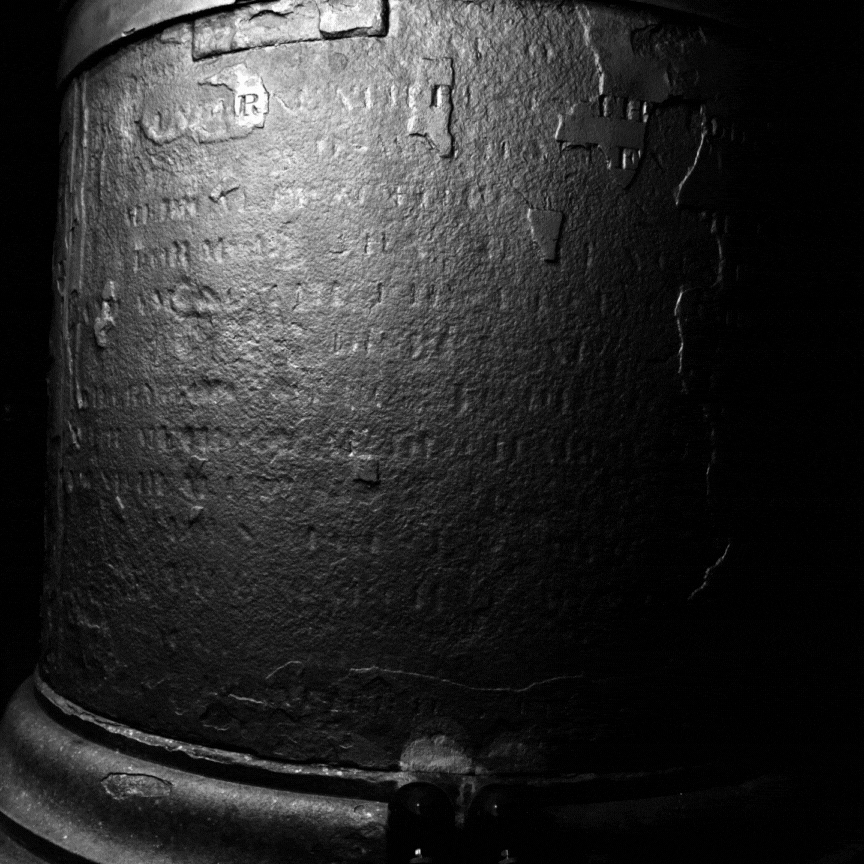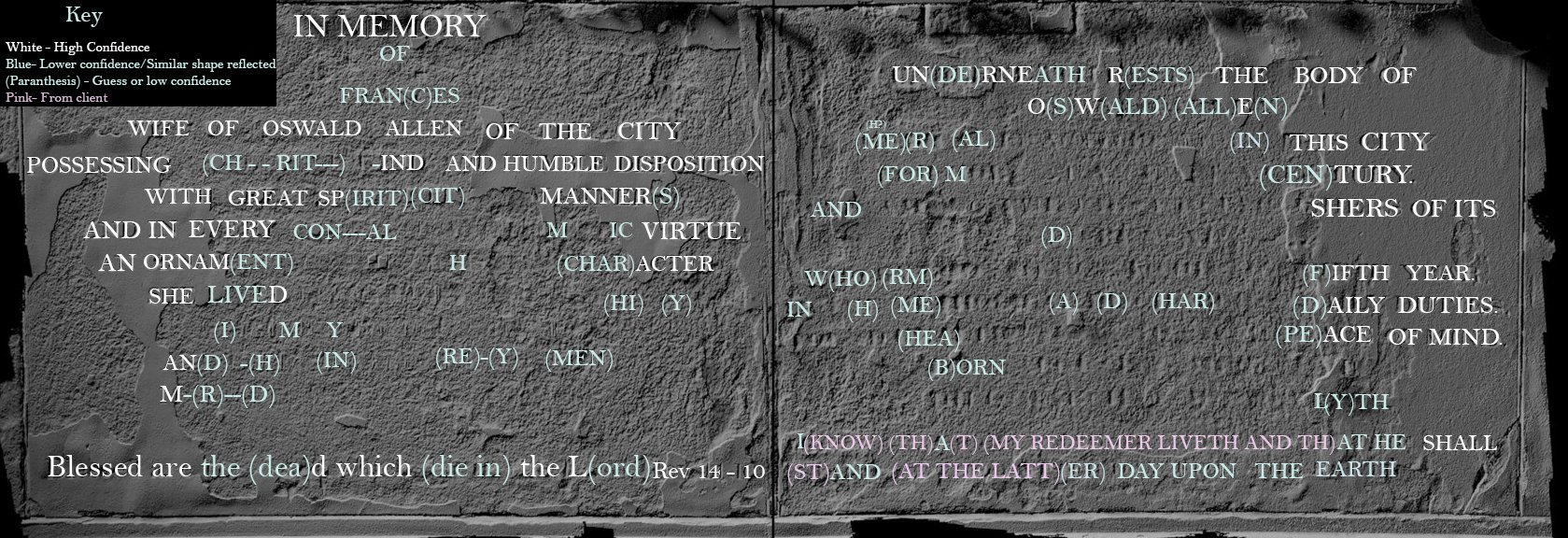OSWALD ALLEN MEMORIAL
lASER sCANNING | reflectance transformation imaging | 3d MODEL PROCESSING
The Oswald Allen Memorial project sought to decipher the incredibly worn inscription on this Victorian era “Medicine Pot” memorial stone in the churchyard of St Lawrence Church in York. No records of the original inscriptions on the two engraved panels have been discovered and typical light-raking techniques weren’t enough to gather the required information. Instead, laser scanning and reflectance transformation imaging (RTI) were undertaken in order to reveal this memorial’s message.
Private client
The Oswald Allen Memorial project utilises the most niche digital heritage techniques in order to recover the past.
related blog articles
Challenge
Weathering has removed much of the detail from the surface of the two panels and in the worst places, chunks leave nothing of previous lettering to be deciphered. By using digital technologies, we sought to discern greater detail than can be seen by the naked eye by highlighting differences in depth of the etchings.
Solution
We combined laser scanning and RTI to gather as much depth information as possible and highlight whatever features of the text still remained. We worked with XR Stories and Sign’s Creative Labs, using two of their laser scanners of different resolutions, to capture as much of the surface as possible. Then using RTI on the physical object itself as well as on the 3D model, we were able to gather further depth information and pick out a few more details that were not previously seen. RTI is a method where multiple images are captured from the same angle while a bright light or flash is moved in order to create shadows to increase the visibility of surface details.
Innovation
The combination of laser scan data with RTI is a very niche area of digital heritage. It is currently being used in reading stone inscriptions as well as for capturing nearly invisible etchings in books and archival materials. We were able to bring our specialisms in heritage research and digital technology together to delve into this investigative process and bring a piece of the past to light.
Laser scan 3D model, flattened to perform RTI and depth analysis
What could be determined of the inscription based on the RTI and depth analysis.





